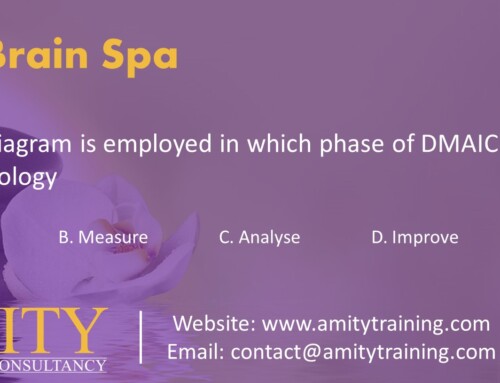Lean Six Sigma For Education Sector
With the advancement of technology, increase in competition and the world becoming a global village, quality has taken a prime position in the education sector. Each institution wants to excel and give its best to the students. As a result, the institutions are facing severe competition from their counterparts and thus the need for Lean Six Sigma For Education Sector.
Is Lean Six Sigma For Education Sector actually helpful?
Lean Six Sigma which was earlier used in the manufacturing industry and has revolutionized many of the top companies in the world is now developing its roots in the Education Sector and is taking it to the unimaginable heights of success.
Lean Six Sigma is the tool that first identifies the correct problems; root causes in the process and then improves the process in totality with structured approach.
Lean Six Sigma is a set of methodologies used by businesses to achieve extremely low failure rates in any process. Typically, if a process is at a Six Sigma level, we expect to have only 3.4 defects per million opportunities. So, if we use the same concept in the education industry, we will be able to make an all-round development and achieve an overall excellence in the field of education.
How to implement Lean Six Sigma For Education Sector?
When this concept of Lean Six Sigma is implemented in the educational sector, it is not only the students but also the Management and the Faculty will be significantly benefited out of it. This will result in an overall reform in the education sector and an improvement in the performance of the students.
Lean Six Sigma can act as a tool to remove inconsistencies and defects in the education sector by applying different measures, process design and / or redesign, improvement and various better management strategies and practices.
Teachers are generally great to provide solutions. Often before they have even identified the problem, they have a solution. But by using the Lean Six Sigma approach, they learn to solve the problems systematically by deliberating more on the root-cause of the problem rather on the solution to the problem.
Some examples of the benefits of Lean Six Sigma For Education Sector
Through Lean Six Sigma, the teachers can be trained to do Why-Why analysis and ask these questions to get to the root-cause of the problem:
- What’s the problem?
- How do you know?
- Why did it happen? (For every reason again ask why till you get to the primary root cause)
- Once the primary reason has been identified then ask for a solution to that reason.
- Also controls should be put in place, so that the actions taken should always be carried out and the improvement is sustained.
If we continuously carry out such activities, it gives the teacher / faculty a new insight to problem solving and to find a permanent fix to the problem than a short term solution.
Lean Six Sigma is customer centered and focuses on the Voice of Customer. Its objective is to deliver maximum value from customers’ perspective.
Teachers are always in learning mode and it is always easy for them to be trained on these latest tools. In schools / colleges we have mathematics and science teachers which are a potential resource that can be initially developed as Lean Six Sigma Black Belt and Lean Six Sigma Green Belt. Also students graduating from the schools / colleges with some Lean Six Sigma background in the form of Lean Six Sigma Yellow Belt and Lean Six Sigma Green Belt would have a competitive edge when they join the organizations for work.
Which are the areas where Lean Six Sigma For Education Sector can be implemented?
Few key areas where Lean Six Sigma can make a meaningful difference for the education sector are:
- Timely preparation and declaration of results
- Accuracy in declaration of result
- Bench-marking institutional performance with other institutions
- Improving upon areas identified as scope for improvement while comparing with other institutions
- Reducing time and queues for payment of fees
- Improving in accuracy of fee payment
- Reducing time for obtaining No Due Certificate from the College
- Improving teaching techniques to impart quality education in efficient and timely manner
- Reducing time for form submissions
- Analyzing the root cause of absenteeism and dropouts and take corrective measures
- Identifying specific weak areas of the students and working upon it
- Analyzing student’s performance and improving the success rate, etc.
Imagine the possibilities of breakthrough performance if teachers were Lean Six Sigma Black Belt or Lean Six Sigma Green Belt and Students were Lean Six Sigma Green Belt or Lean Six Sigma Yellow Belt.







